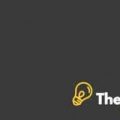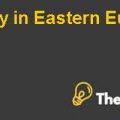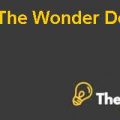Introduction
Frog’s Leap Winery is operating under the winery industry. It is the place where the wine is being made; the company is situated in Rutherford, California. The NAPA Valley is a prominent American viticulture Area (AVA), which is also known as a wine producing region. There are almost 1,250 numbers of wineries in this region and 92% from them can be classified as small wineries. These wineries are producing fewer than 50,000 cases per year. The mid-size wineries are those that can produce cases between “50,000-499,999” and large wineries are those that can produce more than 499,000 cases per annum. After the height of economic global downturn in 2008-2009, during the period the winery industry witnessed a small but significant rebound.
Section 2: The External Environment
The external environmental analysis is a process of identifying all the external elements that can affect the performance of the organization (Makos). The detailed analysis about the industry and the industry is given below.
Competition:
In porter’s five forces model, the competitiveness is assessed that defines the effects of the environment on the industry or company. The forces that affect the winery industry in NAPA are as follow (Managemnet Ebooks).
Competitive rivalry:
The competitive rivalry is high due to the number of competitors in the manufacturing of the green wineries. The higher number gives a competition itself; therefore the competitive rivalry is high.
Threat of new entrants:
The threat of new entrant is low because the industry is already competitive and it may not be possible for new entrants to enter into the market and survive in the industry.
Threat of substitutes:
Threat of substitute is moderate because many people dislike alcohol and in market the sales of non-alcoholic beverages are higher than alcoholic. However,, many people like to drink green alcoholic drinks that are the potential customers, therefore the focus is moderate.
Bargaining power of suppliers:
The supplier power is high because the green wine industry asks for the customized product; therefore the supplier can charge high prices. The supplier has also an option to sell to the other winery company and there are many companies in California.
Bargaining power of customers:
The bargaining power of the customer is moderate because the customer can pay high amount and cannot bargain on green winery products because a person who is health conscious may not bargain for the price.
A competitive weapon:
The competitive weapons are the tools that are used by the companies under the industry to gain the market share and competitive advantage over the competitors. The competitive weapons that companies are using in the winery industry of California are as follows.
- The first weapon is the quality weapon. It is of the best quality and uniqueness of the product can increase the market share of the company (Krajewski/Ritzman).
- The second weapon is to make contractual arrangement with the clubs and wine store in with offering some attractive deals and it can increase the market share of the company.
- The third weapon is to offer discounts to its customers to increase the revenue for the shorter period and attract customers through the taste of the wine with lower price and higher quality.
- The last weapon is to export contracts in California or if we talk about USA and Canada, then there are many brewery manufacturing companies. Therefore, the sale of the products outside the continent can increase the revenues and profitability.
Industry Diagnostic Case Solution
Drivers of change:
The drivers of change are those that can affect the industry level of sales and profitability and three of them are defined as follows.
The first change driver is temperature. The wine sales are high during the winter season because the wine is considered to be warm. During the summer season, the sales are low; therefore the sales are largely affected due to the temperature of the environment.
The second change factor is the economic conditions of the country. The green wine is considered to be expensive, therefore during the recessionary period; people avoid spending money on green wine, and if they go for greener wine, then the quantity is low.
The last effect is the events. If the events are high during the period, then the demand for the wine increases due to high consumption of wine during the events. During Christmas and New Year, the demand for wine increases......................
This is just a sample partial case solution. Please place the order on the website to order your own originally done case solution.













